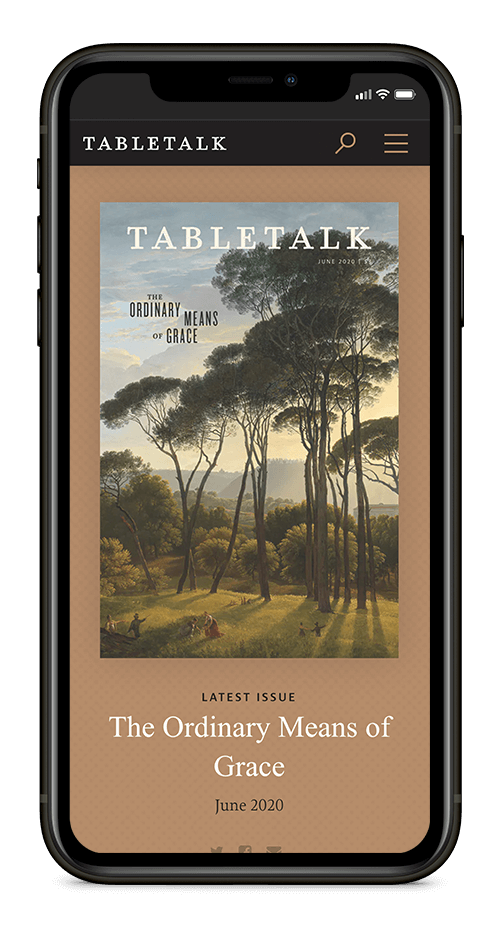
Request your free, three-month trial to Tabletalk magazine. You’ll receive the print issue monthly and gain immediate digital access to decades of archives. This trial is risk-free. No credit card required.
Try Tabletalk NowAlready receive Tabletalk magazine every month?
Verify your email address to gain unlimited access.
John 10:14–15
“I am the good shepherd. I know my own and my own know me, just as the Father knows me and I know the Father; and I lay down my life for the sheep.”
Our Lord’s Good Shepherd Discourse, recorded in John 10, makes use of imagery related to sheep, shepherds, and sheepfolds to give us key truths about the Savior. We have seen that in the ancient Near East, a sheepfold was a walled structure within which several shepherds would shelter their different flocks to protect them from harm. Many flocks would mingle at night, and when day came it would be hard for any onlooker to distinguish which sheep belonged to which shepherd.
An actual shepherd, however, had no difficulty identifying the flock that belonged to him. Furthermore, his sheep would have no trouble identifying the shepherd whom they were to follow. They knew his unique call, his voice, and would find him when morning came. These facts we must keep in mind as background for Jesus’ saying, “I am the good shepherd” (John 10:14–15).
Because Jesus is the Good Shepherd, He knows exactly who His sheep are. Although we may not be able to spot with certainty those who actually belong to Jesus and those who make false professions of faith, He has no such limitations. Moreover, His knowledge of His people is deep, loving, and graciously receptive of all His sheep from the least to the greatest. Matthew Henry comments that Jesus “knows with a distinguishing eye who are his sheep, and who are not; he knows the sheep under their many infirmities, and the goats under their most plausible disguises. He knows with a favourable eye those that in truth are his own sheep; he takes cognizance of their state, concerns himself for them, has a tender and affectionate regard to them, and is continually mindful of them in the intercession he ever lives to make within the veil; he visits them graciously by his Spirit, and has communion with them; he knows them, that is, he approves and accepts of them.”
Not only does Jesus know His sheep, but His sheep know Him. They know His voice specifically and are able to discern it from the many false shepherds who seek to call them. They hear His voice and follow Him, both in their conversion and on into eternity (vv. 27–30). One reason that they willingly follow Him (after God has granted them the new birth; see 3:1–8) is that they know He has laid down His life for them (10:14–15). They love Him because they have learned that He died to atone for their sins specifically and not for the sins of those who are not a part of His flock.
Coram Deo Living before the face of God
In the days ahead, when we look at the doctrine of salvation, we will consider in more depth what it means that Jesus died to atone for the sins of the elect alone. Today, let us reflect on the fact that because of that truth, our Lord had each of His people specifically in view when He went to the cross.
For further study
- Psalm 80:1–2
- Micah 7:14–17
- Hebrews 13:20–21
- 1 Peter 5:1–4
The bible in a year
- Psalms 59–61
- Acts 28:17–31